Space
This is another of my articles to help the many people who come to my science blog saying how scared they are of a planet, which they think is hidden behind the sun and is about to fly past or hit Earth in the near future. What I'm going to describe here is beginner level astronomy, but of course many never study astronomy. Most know that the Earth orbits the sun, nowadays, but few stop to think through what this means for the night sky and where planets can appear in it.
So let's draw out some of those implications, and then, if you are one of those who worry about this, I hope you'll see…
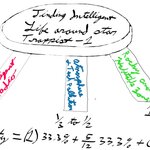
According to new work published recently the TRAPPIST-1
planets could have an atmosphere hospitable to life as we know it. Could that
life be intelligent and technological if it is there? Sadly, that is not
likely. At less than 50 light years away we have had radio technology long
enough that we would have heard something from them by now. There could have
been two way communications by now and there haven’t been. The real
significance of these planets is that they could be the best extra solar
candidates for human colonization. (Gillon, et al. n.d.) …
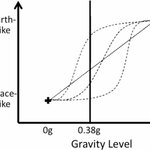
We might get our first humans living long term on the Moon by the 2020s. How will they cope with lunar gravity, and will it need to be augmented, and if so, how? There is a lot written about artificial gravity to counter health issues in zero gravity. but what about artificial gravity on the Moon?
First though, does lunar gravity need to be augmented at all? It's often said, almost as if it must be a fact, that you would be healthiest at full g, less healthy at Mars g, even more unhealthy in lunar g, and have most health issues with zero g. And that might be the case. But you can't…
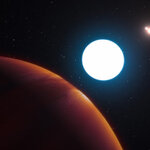
Imagine a planet where you experience constant daylight or even triple sunrises and sunsets each day, because the seasons last longer than human lifetimes.
That's the case with HD 131399Ab, which has the widest known orbit within a multi-star system. Located about 340 light years from Earth in the constellation Centaurus, HD 131399Ab is believed to be about 16 million years old, making it one of the youngest exoplanets discovered to date, and one of very few directly imaged planets. With a temperature of 850 Kelvin (about 1,070 degrees Fahrenheit or 580 degrees Celsius) and weighing in…

If conditions had been just a little different an eon ago, there might be plentiful life on Venus and none on Earth.
In Astrobiology, researchers note that minor evolutionary changes could have altered the fates of both Earth and Venus in ways that scientists may soon be able to model through observation of other solar systems, particularly ones in the process of forming, according to Rice Earth scientist Adrian Lenardic.
The authors suggest that habitable planets may lie outside the "Goldilocks zone" in extra-solar systems, and that planets farther from or closer to their suns than Earth may…
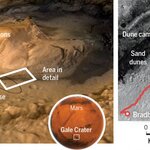
Researchers have discovered a type of dune on Mars intermediate in size between tiny ripples and wavier dunes, and unlike anything seen on Earth.
Because dunes can be preserved in rock over time, these mysterious sedimentary deposits may represent a way to gain insights into the evolution of Mars' atmosphere from a more hospitable realm to the harsh, dry climate observed there today. On Earth, wind and water passing over sand causes the formation of either large dunes or small ripples, collectively called bedforms.
Using a combination of images from the Mars Reconnaissance Orbiter and the…

Roughly 90 percent of the biggest black holes are dormant, meaning that they are not actively devouring matter and therefore not giving off any light or other radiation.
Yet dormant is not dead, so when a star wanders too close, the ensuing feeding frenzy - a tidal disruption event - sets off a spectacular fireworks show.
For the first time, astronomers have been able to document X-rays bouncing around deep within the walls of a once-dormant black hole's newly formed accretion disk--the giant, puffy cloud of shredded star stuff circling the black hole, waiting for its turn to be…

Venus has an "electric wind" strong enough to remove the components of water from its upper atmosphere, which may have played a significant role in stripping Earth's twin planet of its oceans, according to new results from ESA's Venus Express mission by NASA-funded researchers.
Venus is in many ways the most like Earth in terms of its size and gravity, and there's evidence that it once had oceans worth of water in its distant past. However, with surface temperatures around 860 F (460 C), any oceans would have long since boiled away to steam and Venus is uninhabitable today. Yet Venus' thick…
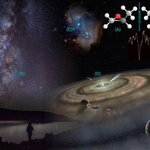
Chiral molecules, compounds that come in otherwise identical mirror image variations, like a pair of human hands--are crucial to life as we know it. Living things are selective about which "handedness" of a molecule they use or produce. For example, all living things exclusively use the right-handed form of the sugar ribose (the backbone of DNA), and grapes exclusively synthesize the left-handed form of the molecule tartaric acid. While homochirality--the use of only one handedness of any given molecule--is evolutionarily advantageous, it is unknown how life chose the molecular handedness…

In the race towards the discovery of another planet in our solar system, the ninth or tenth depending on how seriously you take the 2 percent of astronomers who demoted Pluto, scientists are striving to calculate its potential orbit using the tracks left by the small bodies that move well beyond Neptune. And the calculations may mean even more than 10 exist.
New calculations confirm that the orbits of the six extreme trans-Neptunian objects that served as a reference to announce the existence of Planet Nine are not as stable as it was thought.
What changed so fast? Earlier this year,…